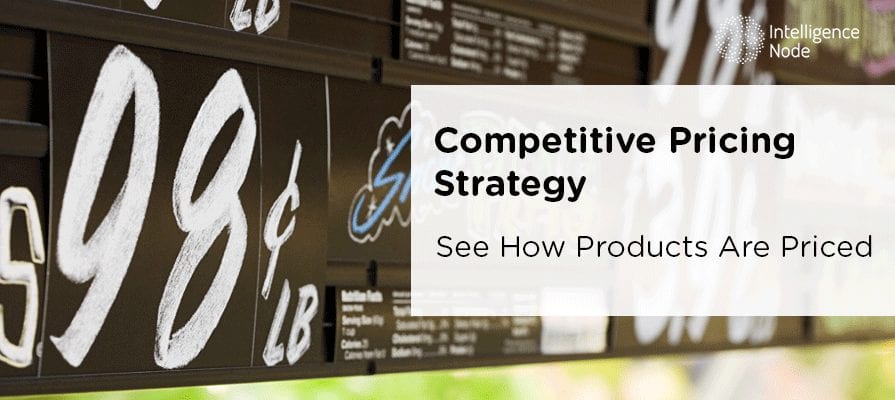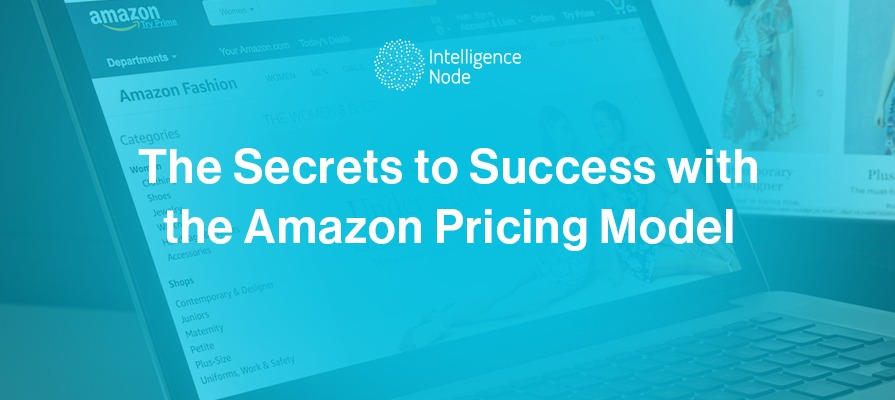Using competitive price analysis software is necessary for staying one step ahead of your competitors!
Competitive pricing analysis was once considered a luxury — something only big brands could afford to implement. But in today’s commerce landscape, that’s no longer the case.
Today’s comparison shoppers are tech-savvy and have the tools to easily compare prices across platforms, making competitive pricing necessary. If your prices can’t compete with your competitors’ while still staying profitable, you will soon see revenue, customer satisfaction, and brand loyalty plummeting.
But before we dive into this essential facet of modern-day pricing strategy, let’s go back to the basics.
Content Summary:
What is competitive price analysis?
How do you perform a competitive price analysis?
Why are competitive pricing tools so important?
What are the big picture benefits of competitive pricing?
When is the best time to implement a competitive pricing strategy in retail?
What is Competitive Price Analysis?
Competitive price analysis is a mindset shift — from the arbitrary to the pragmatic. It is a practice that eliminates guesswork and uses multiple data-driven factors to make pricing decisions. What are these data-driven factors?
Key Factors Influencing Competitive Price Analysis
Competitors
One of the main factors is, of course, your competition. Every pricing decision comes with the caveat question of whether it can beat the other offers out there.
But this competitor factor is a broad umbrella with many sub-factors. When it comes to your opponents, you have to consider their existing and historical prices – this isn’t easy when daily dynamic pricing changes have become commonplace. And, putting it all together to grasp their overall pricing trends —
- When do they hike or lower their prices?
- How often do they change their prices?
- What about their promotional trends — when do they run discounts?
- How do other initiatives like marketing and promotional offers vary over time?
Historic Data
But let’s expand the idea of beating your competition. Because you’re not just competing with other brands; you are also competing to make your brand bigger, more profitable, and with a higher market share. To this end, a competitive pricing strategy must also factor in historical data.
20 Secrets to Designing the Best Pricing StrategyConsumer & Market Trends
Another side to this die is your consumers themselves — how have their trends changed over time? What sort of behavioral patterns can you confidently predict moving forward?
Or what about your broader market realities? Beyond your direct competitors, you need to consider big-picture industry shifts or general cultural movements that may impact the perception and consumption of your product. (As a timely example, consider the impact of a pandemic across industries).
The questions go on and on. But the bottom line is that this process utilizes competitive pricing data to answer these questions and use these answers to develop more informed business strategies.
How to Perform a Competitive Price Analysis?
So, we’ve now thoroughly identified many of the questions that competitive price analysis asks. But let’s actually explore what the process of answering these questions might look like.
Identify Your Direct and Indirect Competitors
Before you can make any decisions with respect to your competitors, you have to know who your competitors are. Part of this process is a matter of finding out which brands truly do compete for the same customers that you do.
Another leg of competitive price analysis comes in the form of categorization because not all competitors come equal. The initial instinct here is to think of direct competitors — the ones who offer similar services, with similar brand reputations and target audiences (think: McDonalds and Burger King, Nike and Under Armour). But we also can’t forget about secondary competitors — these are the brands in the same product category with offerings of higher or lower quality (i.e. McDonald’s and Five Guys or Shake Shack, Nike and Champion or Old Navy). And then there are also tertiary competitors, who offer different products that act as substitutes which still compete with yours (i.e. Zara for Nike).
Analyze Competitor Pricing & Product Strategy
With that out of the way: Once you know your competitors, you want to know the ins and outs of their operations. Consider this the research step, analyzing their pricing trends from all angles possible. We’ve already mentioned several considerations, but there are many other minor details that go into pricing — for instance, the differences between prices listed online versus in-store. Then, expand your reach beyond the prices. Digest their content, pin down their value propositions, read customer and press reviews.
Identify Pricing Gaps
Now, this research step can get overwhelming; there is, after all, seemingly unlimited amount of competitive pricing data at your disposal. To narrow things down a bit and focus your efforts, it’s important to pinpoint the data categories that matter most to you (i.e. that are most likely to have areas of opportunity). Some examples we’ve touched on — discounting tendencies, for instance. And some we haven’t — consider how prices often bend according to rises and falls in supply.
But no matter which details are most important to your brand, using manual processes and spreadsheets to analyze data just won’t make the cut. This is where the magic of competitive price analysis software comes into play.
Why are Competitive Pricing Tools Important?
Now that we’ve outlined the general framework of a competitive pricing strategy, you know it’s a tall task. It sounds good in theory, but where are you supposed to find the resources to conduct this thorough, nuanced research and analysis process?
Read More : A Smart Price Intelligence Software is Your Best Bet to Increase Revenue
The answer comes in the form of competitive price analysis software. We have the luxury of machine-learning tools at our fingertips — ones that can juggle huge loads of different data with exceptional accuracy and speed. The competitive price analysis tools take the manual labor of competitor research and data analysis off your plate, enabling your team to focus on the crucial human tasks. Perhaps most important of all is that such automated software performs pricing analysis in real-time. For instance, consider Intelligence Node’s price comparison software, which instantly collects and presents accurate, up-to-the-minute competitors’ insights. In fact, with a data refresh rate of 10 seconds, you can adjust your prices based on what’s happening right now. After all, price optimization is a game that never sleeps; if you’re making decisions based on yesterday’s data, you’re already a few steps behind.

Often, managers are thrown off by the proposition of bringing in competitive price analysis software. It’s yet another thing to figure out, implement, and pay for — and trust us, we get it. But when looking at the broader picture of market competition, these competitive price analysis tools are actually a cost-saving measure. They save your team a lot of time wasted on manual labor, they increase the efficiency of your price setting strategies, they track similar products across thousands of your SKUs and they open the door to market insights you simply would never have accessed otherwise. Just consider for a minute how our Competitive Benchmarking tool identifies hidden tertiary competitors from around the globe! Where else are you getting that international reach?
What are the Benefits of Competitive Pricing?
Beyond the mentioned advantages, let’s examine what benefits you get from a fully functional, automated competitive pricing database.
Identify Pricing & Supply Gaps
When we look at all the research and different kinds of data, the goal is to find your competitors’ weak spots. This process is about finding the gaps where competitors are underrepresented (where their prices aren’t ideal, where their supply is short) and taking advantage. As markets fluctuate, areas of opportunity present themselves; our goal here is to find them as they pop up.
Make Data-driven Competitive Pricing Decisions
Once you identify gaps in your competitors’ pricing strategy, the next step is to pivot to use these gaps to your advantage. A smart pricing tool doesn’t just do a pricing analysis but offers data-driven, actionable insights to optimize your prices. It offers recommendations to maximize sales and profits without compromising on margins, all in near-real-time. Such AI-led competitive pricing tools empower you to take swift action by eliminating manual work, giving you significant advantage in the market.
Grow Margins & Marketshare
The more advantage you can take of those opportunities, the better your profit margins. And if you can optimize your prices consistently, it puts you in an unprecedented power position to scale your business. It allows you to make informed product decisions, based on real-time and historic competitive pricing analysis and see the entire chessboard — where you make decisions viewing your entire product line as a whole, rather than a collection of distinct items.
Challenges of Implementing Competitive Price Analysis
Pricing Analysis Errors
The key to ensuring accurate competitive pricing is to equip yourself with sophisticated data analytics tools that are highly accurate, like Intelligence Node’s price comparison tool, that offers an unmatched 99% data accuracy rate. If your competitive analysis is riddled with errors and inconsistencies, it can affect your decision-making and bottom line. Manual methods can also lead to problems as they can be inefficient and error-prone in handling large amounts of data.
Difficulty Finding the Right Matches
Finding correct matches for your products is half the battle won. But it’s no easy task. Your competitors don’t just offer identical products but hard-to-find similar products that need to be considered while doing a competitive pricing analysis. Advanced product matching solutions can help identify similar products across a variety of attributes like similar color, style, sizes, fits, uses, etc. This ensures that you don’t leave behind similar products your competitors sell.
Stale Data Due to Infrequent Data Update
eCommerce offers quite distinctly from brick-and-mortar, especially in terms of how often product prices are updated. With eCommerce, brands and retailers often optimize/adjust prices daily, sometimes even hourly. If your competitive data is not near real-time, you are probably using data that is no longer relevant. For a precise competitive price analysis, it’s critical that your data is continuously updated.
When is the Best Time to Implement a Competitive Pricing Strategy in Retail?
The implementation of competitive pricing strategies will differ across industries and companies. While you can implement a competitive pricing strategy in the early stages of your business, it will be most profitable when you are looking to scale, acquire and retain customers, and improve your profitability now and in the future. Which approach will give you the most benefits listed above depends on a host of factors — check out our article detailing several such strategies for more. But what doesn’t vary is the importance of having these systems up and running asap! Tapping into data sure beats any system of arbitrary analysis, so get started today.





